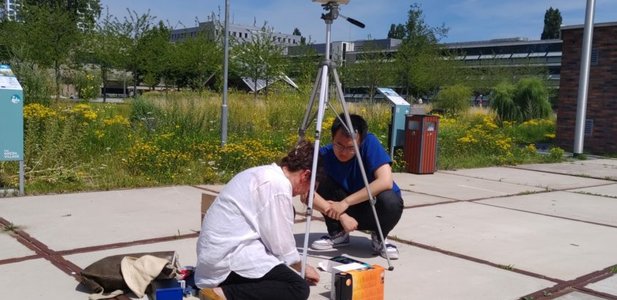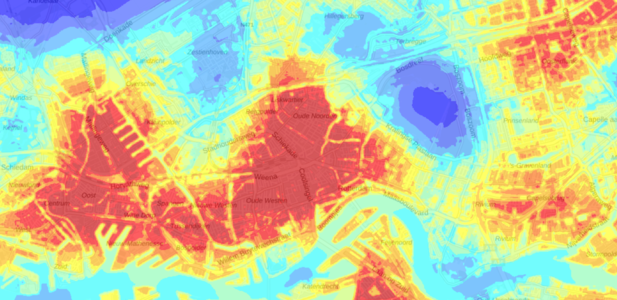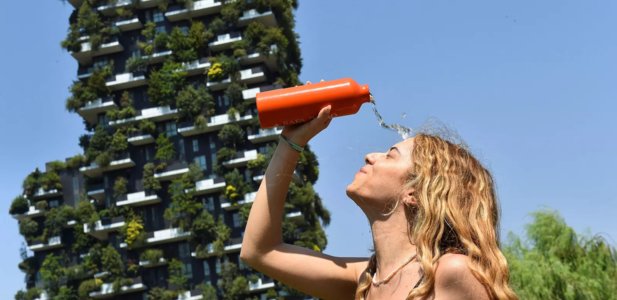Track Atmospheric Environment Engineering
We experience the atmosphere around us every day and take it for granted. Yet, it is changing! Frequent climate extremes and pollution put an ever increasing strain on our urban and rural living environment.
Are you the one to:
- ... make our living environment climate resilient?
- ... create livable and healthy cities?
- ... take part in the challenge?
The track Atmospheric Environment Engineering (AEE) enables you to develop engineering solutions to keep our living environment healthy. The track departs from a solid scientific basis and discusses the fascinating atmospheric processes happening all around us. This will help you to understand questions like:
- Why are cities so much warmer than the rural environment during heat waves?
- Why do we hear noise so much better in the dark?
- Why is rainfall more intense in big cities?
- What is winter smog and how is it caused?
- How does this affect our bodies and what can we do about it?
Throughout this track you will apply this scientific knowledge to concrete and realistic cases. Together with your classmate, you will design your own innovative solutions to our pressing environmental challenges as to create a healthy and sustainable living environment.
Key features
➨ Solid scientific basis in environmental physics applied to our local living environment.
➨ Learn state-of-the-art observational and modeling techniques to understand our complex local weather and climate.
➨ Apply various tools to predict and mitigate local weather extremes, and air and noise pollution.
➨ Design novel engineering solutions for future challenges affecting our atmospheric environment.
Atmospheric Environmental Engineering requires certain application of skills. See below when you will put these skills to practice in the AEE curriculum.

Predict and mitigate extreme weather events (precipitation)
You will predict and mitigate extreme weather events in the following course themes:
- Urban Climate Physics within the AEE Steppingstone course (ENVM1700)
- Extreme Urban Weather and Integrated AEE project within the AEE Grand Challenge B Module (ENVM1900)

Measure our built environment
You will measure our built environment in the following course themes:
- Urban Climate Physics within the AEE Steppingstone course (ENVM1700)
- Atmospheric Measurement Techniques for Urban Environments within the Atmospheric Measurements and Modelling A Module (ENVM1800)
- Integrated AEE project within the AEE Grand Challenge B Module (ENVM1900)

Model air and sound polution
You will model air and sound pollution in these course themes:
- Physics of Sound and Human Perception within the AEE Steppingstone course (ENVM1700)
- Air Pollution Meteorology & Dispersion and Modelling of Urban Flows within the Atmospheric Measurements and Modelling A Module (ENVM1800)
- Indoor and Outdoor Air Quality and Noise Modelling & Mitigation within the AEE Grand Challenge B Module (ENVM1900)

Understand the urban heat island and thermal comfort
You will understand the urban heat island and thermal comfort in these themes:
- Extreme Urban Weather within the AEE Grand Challenge B Module (ENVM1900)
- Urban Climate Physics within the AEE Steppingstone course (ENVM1700)
- Integrate AEE project within the AEE Grand Challenge B Module (ENVM1900)
| Highlighted Student Stories
Researching climate change in the Spanish heat
Extreme heat in Canada, flooding in the Netherlands and forest fires everywhere. The climate is changing and the dangers of droughts and floods are lurking. MSc student Gijs Vis didn’t hesitate when he got the opportunity to work on a unique international climate research project in Spain where scientists from multiple European countries joined forces during an intensive fieldwork campaign.

